Architectural landscape of Prishtina has changed a lot after the war. How did Prishtina turn from a quaint capital to a hub of chaos, and is there a way to steer it in a different direction?
In one of Prishtina’s oldest neighborhoods, Dardania, the walls of a cafe still whisper echoes of the past century. Brimming with evocative black and white photographs, café ‘Te Pini’ stands as a testament to a bygone Prishtina.
Named after Pinnes, the son of King Agron and Queen Teuta of Illyria, ‘Te Pini’ proudly showcases around 100 photographs of old Prishtina. Its owner, Metiner Rexha, now 61, opened the café in a time when there were no buildings surrounding it.
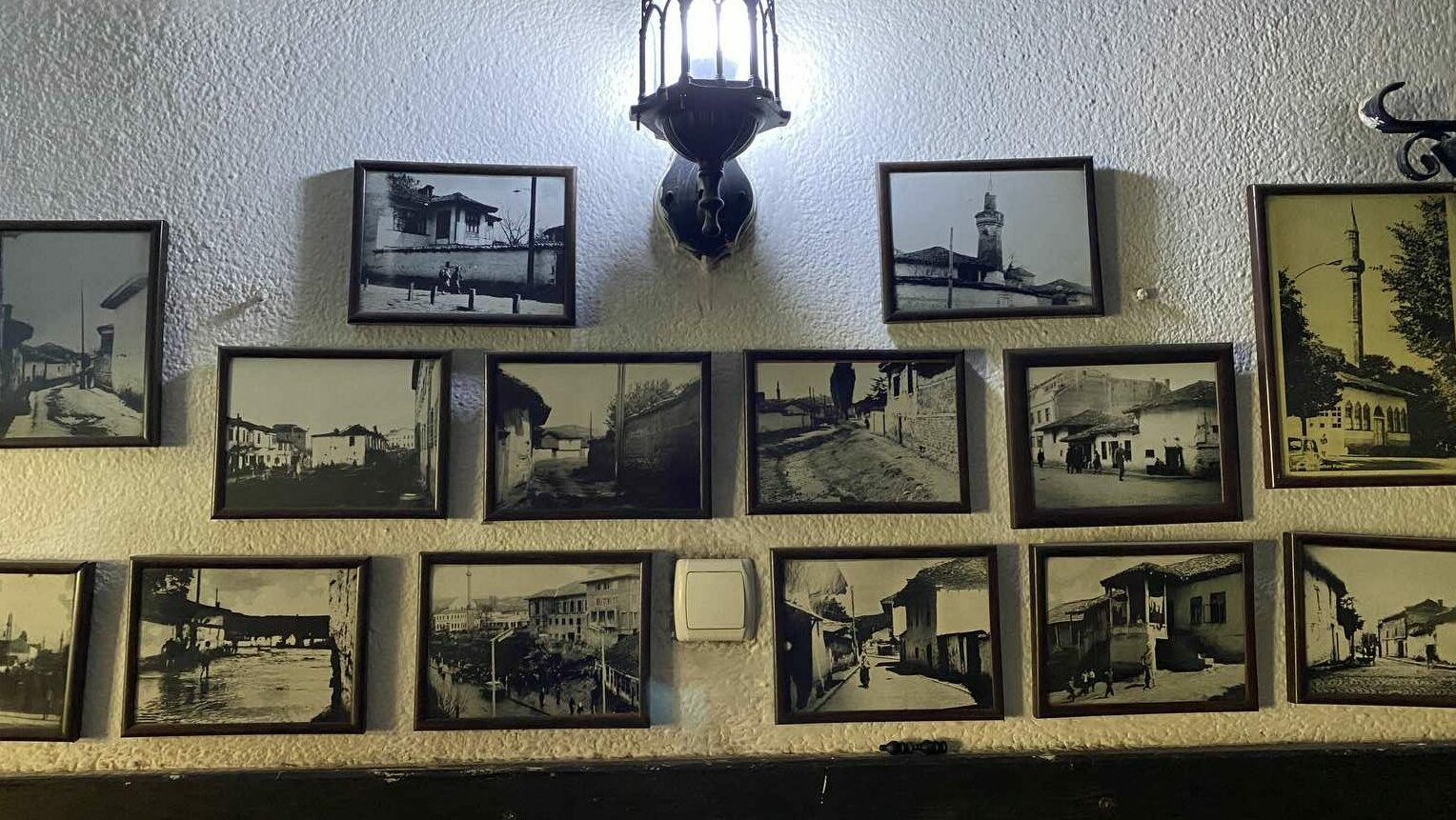
‘Te Pini’ stands as a testament to a bygone Prishtina. Photo: Prishtina Insight
A lot has changed in the meantime. Rexha reminisces about the past, though he understands that development is inevitable. However, he finds the current state of Prishtina disconcerting, characterized by chaotic growth and uncontrolled urban expansion.
Prishtina’s architectural landscape, once modest with few buildings up until the late 1990s, has undergone a profound metamorphosis in the post-war era. It now boasts an eclectic mix of styles and structures that seemingly defy gravity. However, this evolution has not been without its share of controversy. Many locals perceive it as a bewildering departure from the city’s historical identity, contributing to a sense of disorder and disarray in the urban fabric.
A mosque on one side, a church on the other, and an iconic fort with small cafes around, in the heart of the city, used to be architectural features of Prishtina.
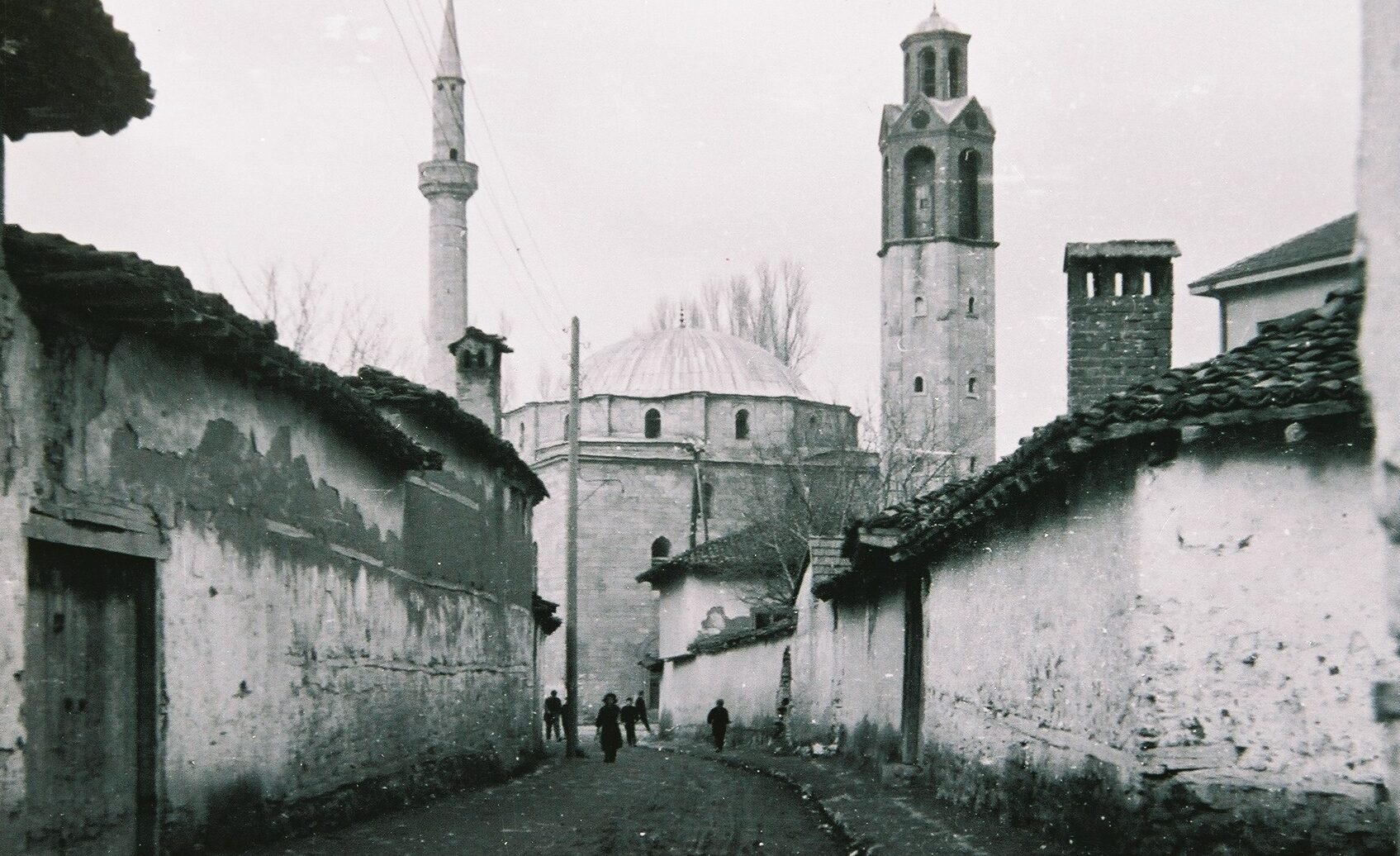
Old Prishtina. Photo courtesy of Kosovo Archives.
Now, the capital has become a center of chaos.
Following the massive urban migration after the war, Prishtina has transformed into a settlement marked by tall buildings lacking a unified standard. Large structures stand clustered together without any discernible pattern, juxtaposed with small houses and uniquely colored flats.
“Until the 1990s, the old church stood at Hotel Grand, the mosque was located where Swiss Diamond stands today, and a quaint café occupied the remnants of the mosque’s location, but none of these have been preserved,” laments Metiner Rexha during a conversation with Prishtina Insight.
“Why are we burying our past?” Rexha questions.
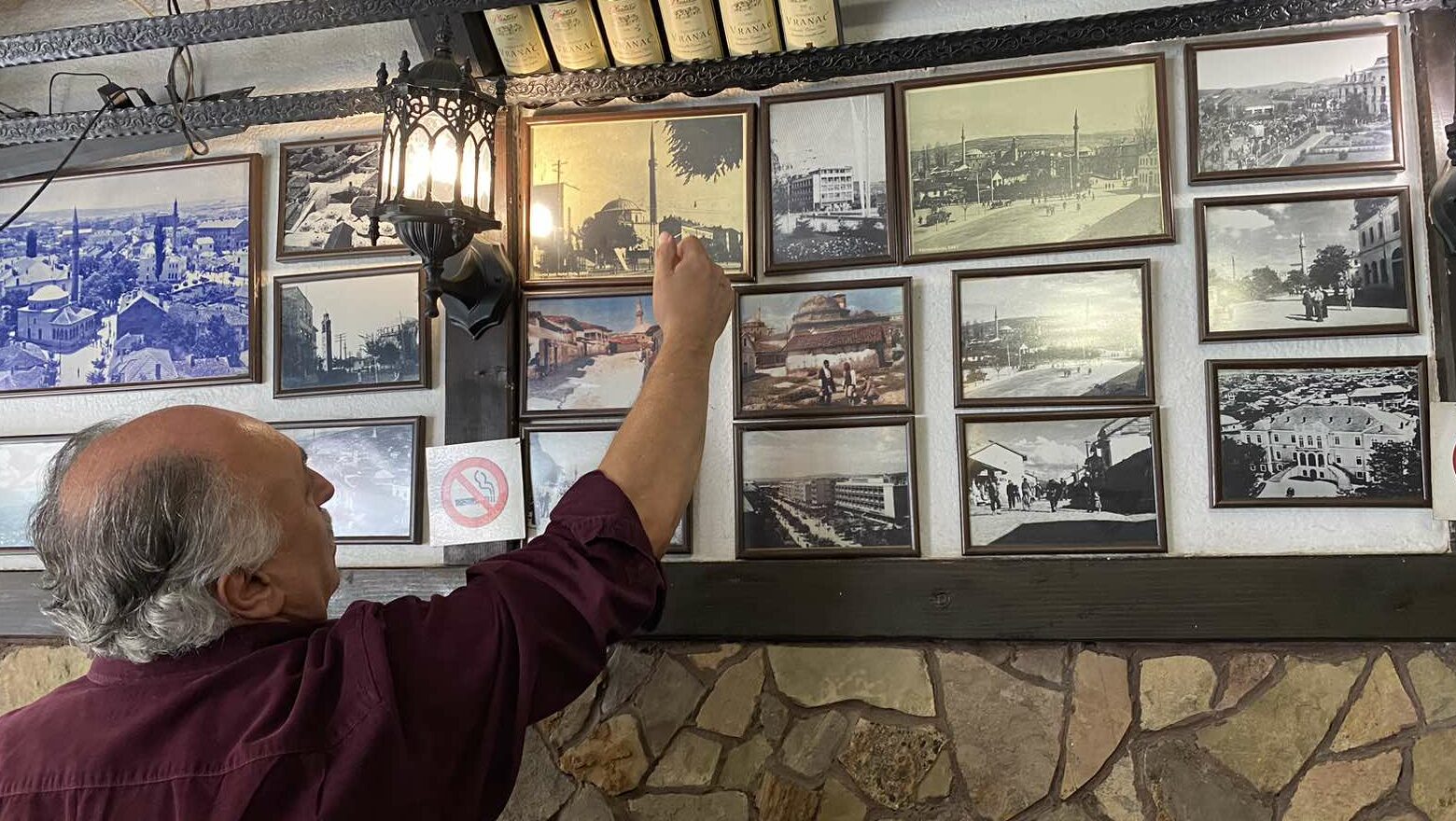
“Te Pini”owner, Metiner Rexha, an old citizen of Prishtina. Photo: Prishtina Insight
Preserving each layer of the Prishtina built in different eras is essential for the capital to embody a diverse mix of civilizations while maintaining its own unique identity.
Preserving each layer of Prishtina, built during different eras, is essential for the capital to embody a rich amalgamation of civilizations while maintaining its distinct identity.
One of the black and white photos in Rexha’s café showcases Veterniku and Arbëria neighborhoods, devoid of any buildings at the time. Today, these areas stand among the bustling parts of the capital.
Another photograph depicts the city center near the National Theater, devoid of surrounding buildings and featuring a pool where the Newborn obelisk now proudly stands.
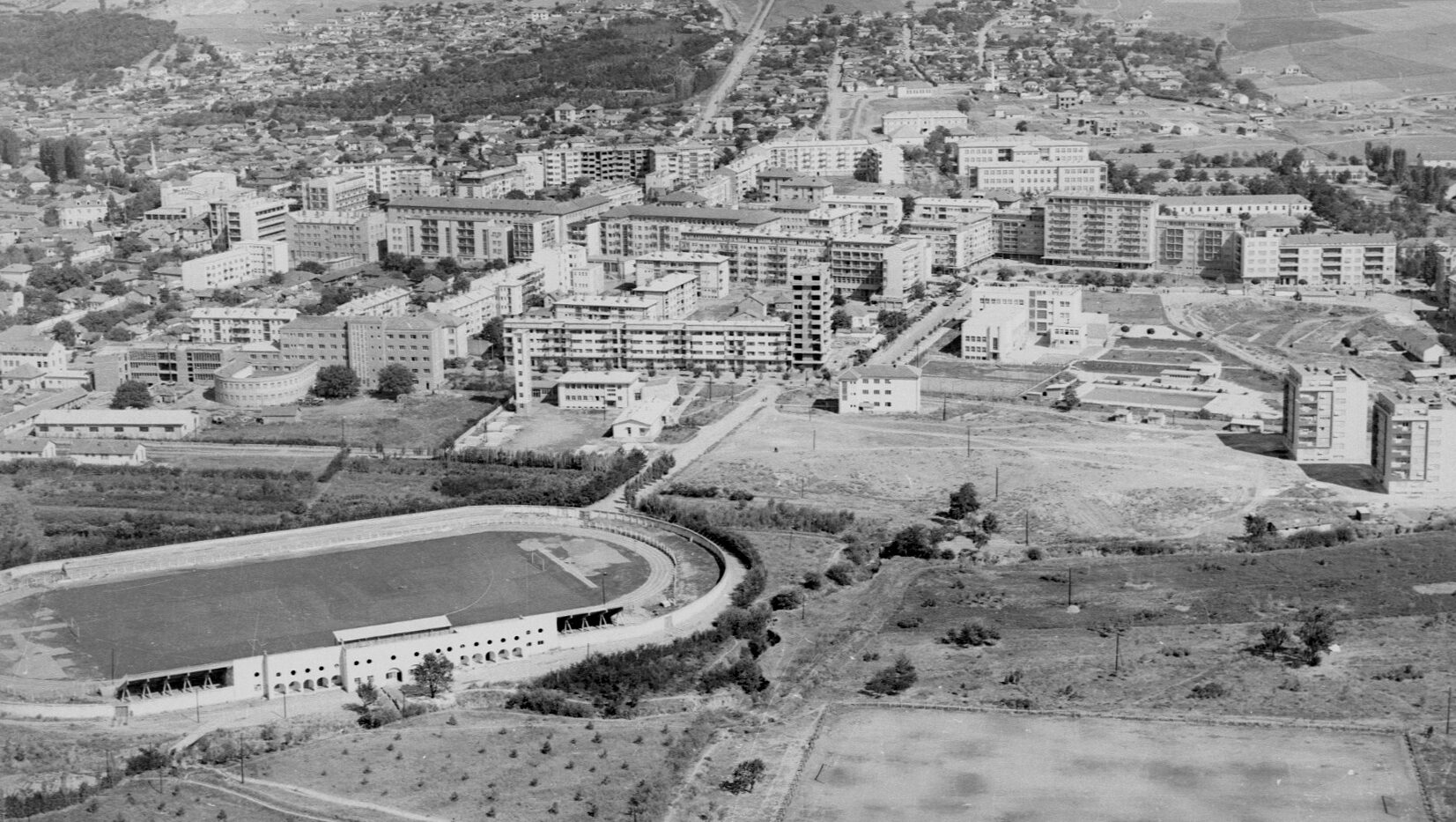
Old Prishtina. Courtesy of Kosovo Archives.
“There is very little in the post-war Prishtina that carries a distinct identity, apart from the Newborn monument, which has now become the symbol of the city,” Rexha observes, his outlook tinged with pessimism regarding the new constructions.
He mourns the absence of efforts to preserve old buildings and the lack of identity in new constructions, which he characterizes as apocalyptic.
Rexha, a long-time Prishtina resident, fondly recalls the era when horse-drawn carriages filled the city’s streets.
“Prishtina was so small then that when we saw a Mercedes we were surprised,” concluded Rexha with nostalgia.
“Prishtina: A City of Experiences” – A new motto with fresh expectations
In 1992, a year before the opening of Rexha’s cafe, the current mayor, Përparim Rama, left for London. He returned three decades later to lead the city.
An architect by profession, Rama assumed the leadership of Prishtina with the goal of addressing the urban chaos that gripped the capital.
Initially, his vision to connect Prishtina’s neighborhoods so that the center could be reached within six minutes from any neighborhood appeared ambitious to the citizens. Nonetheless, during his tenure, several projects were completed, including the removal of the car blockade at George Bush Square, the reconfiguration of the Post Office steps, and the construction of an Underground Parking facility.
While these projects date back to earlier years, Mayor Rama has also initiated plans to transform the former Gërmia building into a concert hall and art museum, preserving its identity.
Përparim Rama’s plan for the capital, 2021.
However, two years into Rama’s term, Prishtina still grapples with chaos.
The new mayor remains open to experimentation, despite complaints about traffic jams from many citizens. He had promised that, under his leadership, Prishtina would evolve into a city seamlessly blending tradition and modernity.
According to the mayor, one of the primary contributors to urban chaos is the inability of public sector services such as roads, sewerage, water, schools, and health services to keep pace with the rapid development of housing construction by the private sector.
“Architectural style is superficial. It is the space within the architectural building or the public space that has a direct impact on how we feel,” remarked Rama in a conversation with Prishtina Insight.
He emphasized that each construction and development in a city, particularly its capital, affects people either negatively or positively. This underscores the crucial responsibility borne by architects, urban planners, municipal leaders, and decision-makers to align city development with the needs of its citizens.
With a background in architecture, Rama contends that many post-war constructions in Prishtina are not inherently detrimental; they could have been designed to serve the city’s residents effectively without detracting from its urban landscape. “But if they are not aligned with the citizens’ needs, then they should not exist.”
The architect-mayor views skyscrapers as environmentally friendly because they utilize more airspace than ground space. However, he is not always satisfied with the architectural choices made for significant structures, as evidenced by his critique of the Great Mosque. He believes that modern technology could have been employed to create a new representation in terms of both form and materials, rather than harkening back to past architectural aspects.
“Each era should be represented in its own style,” asserted Rama.
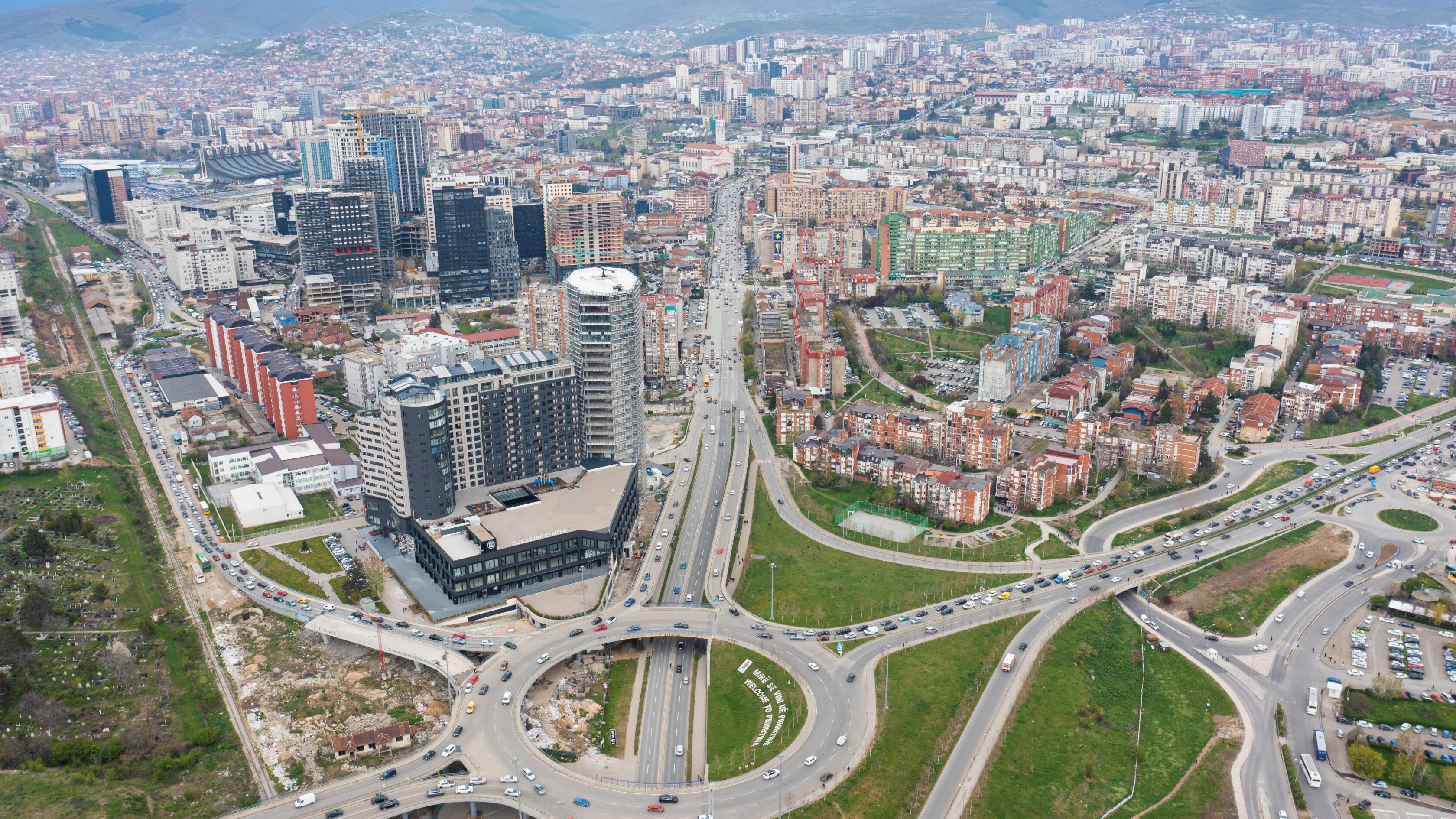
Prishtina, May 2023. Photo: Denis Sllovinja/ Prishtina Insight
Despite this, he firmly believes that Prishtina possesses a positive, unique, and creative sensibility that transcends its diverse buildings and architectural styles.
A blend of everything
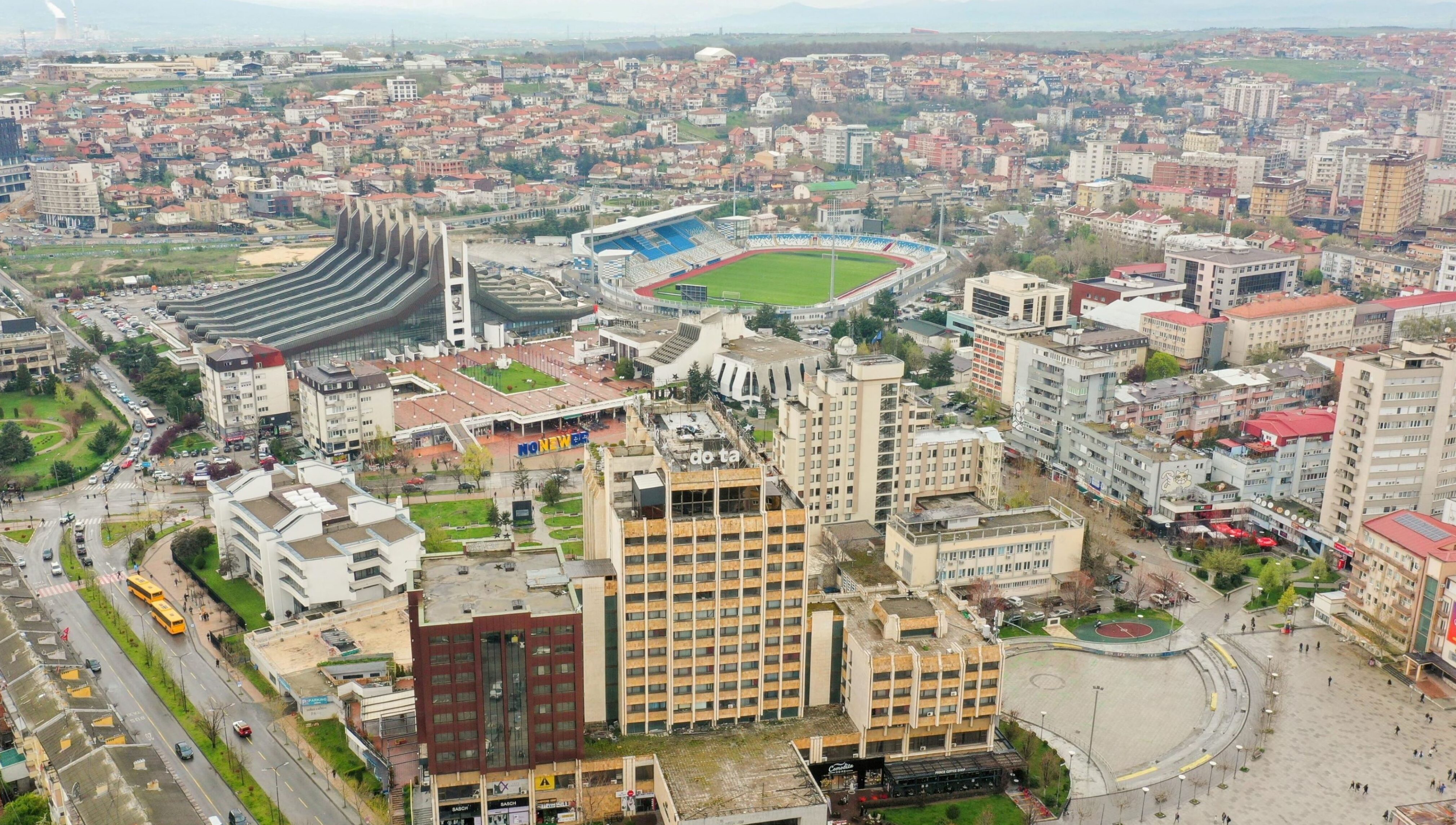
Prishtina, May 2023. Photo: Denis Sllovinja/ Prishtina Insight
Upon visiting Prishtina, one encounters structures that stand as remnants of the communist era, now considered iconic landmarks. While these buildings were once seen as the erasure of the city’s identity, they are now regarded as an integral part of Prishtina’s heritage, with many enjoying state protection.
In the 1950s, under the Yugoslav Socialist regime, the state’s urban development motto was ‘Destroy the old, build the new.’ Communist-era buildings still grace Prishtina’s skyline, particularly those that formerly served as public structures and are now enduring symbols of the city, such as the Palace of Youth and Sport, which, though now almost non-functional, remains an emblematic structure.
From the 1960s to the 1990s, when Kosovo was part of the former Yugoslav Federation, the political and urban development strategy prioritized the construction of roads and multifunctional social and cultural buildings to accommodate housing and work, as detailed in a scholarly work by Teuta Jashari Kajtazi, a professor at the University of Prishtina.
Despite the original intentions to eradicate the city’s previous characteristics and introduce a more modern aesthetic, these communist-era buildings have undeniably left an indelible mark on Prishtina’s architectural landscape, characterized by a common architectural style and the prevalent use of concrete.
Throughout the decades, each political ideology that arrived in Prishtina, including communism, sought to create something new, reshaping both the city and its residents, as noted by Arsim Canolli, Anthropology of Material Culture professor at the University of Prishtina.
However, the Milosevic period from 1998 to 1999 marked a campaign of physical destruction of cultural monuments, including mosques such as the Llap Mosque, and the deliberate destruction of buildings like the Islamic Community Archives, as reported by the European Stability Initiative. On June 9, 1999, Serbian authorities relocated the entire archive of the Institute for the Protection of Monuments in Kosovo to Belgrade.
In Canolli’s perspective, Prishtina stands as a patchwork city, fusing Ottoman, Austro-Hungarian, communist, and contemporary architectural styles into a historical and aesthetic tapestry. This mosaic includes prominent landmarks like communist-era residential complexes, the University of Prishtina Campus, and the emerging skyscraper-dotted neighborhood of Lakrishta.
According to Canolli, Prishtina possesses its own architectural identity, characterized by various subcultures where people incorporate different styles like German, Turkish, and American. But, the latest constructions he considers as chaos.
“Constant construction since 2000 is a trauma for the citizens of Prishtina,” he added.
Canolli also identifies fenced neighborhoods on the city’s outskirts, inhabited by a new class of residents, as a new subculture that has amassed economic capital. Additionally, there are neighborhoods that preserve socialist infrastructure with minimal architectural developments, as well as areas that still retain the ambiance of mini-villages or neighborhoods of close-knit relatives.
While Prishtina boasts a rich history dating back to prehistoric times, the old part of the city, which evolved from a village to an Ottoman town, has undergone substantial destruction over the past two centuries, particularly during the communist era and after the 1998-1999 war.
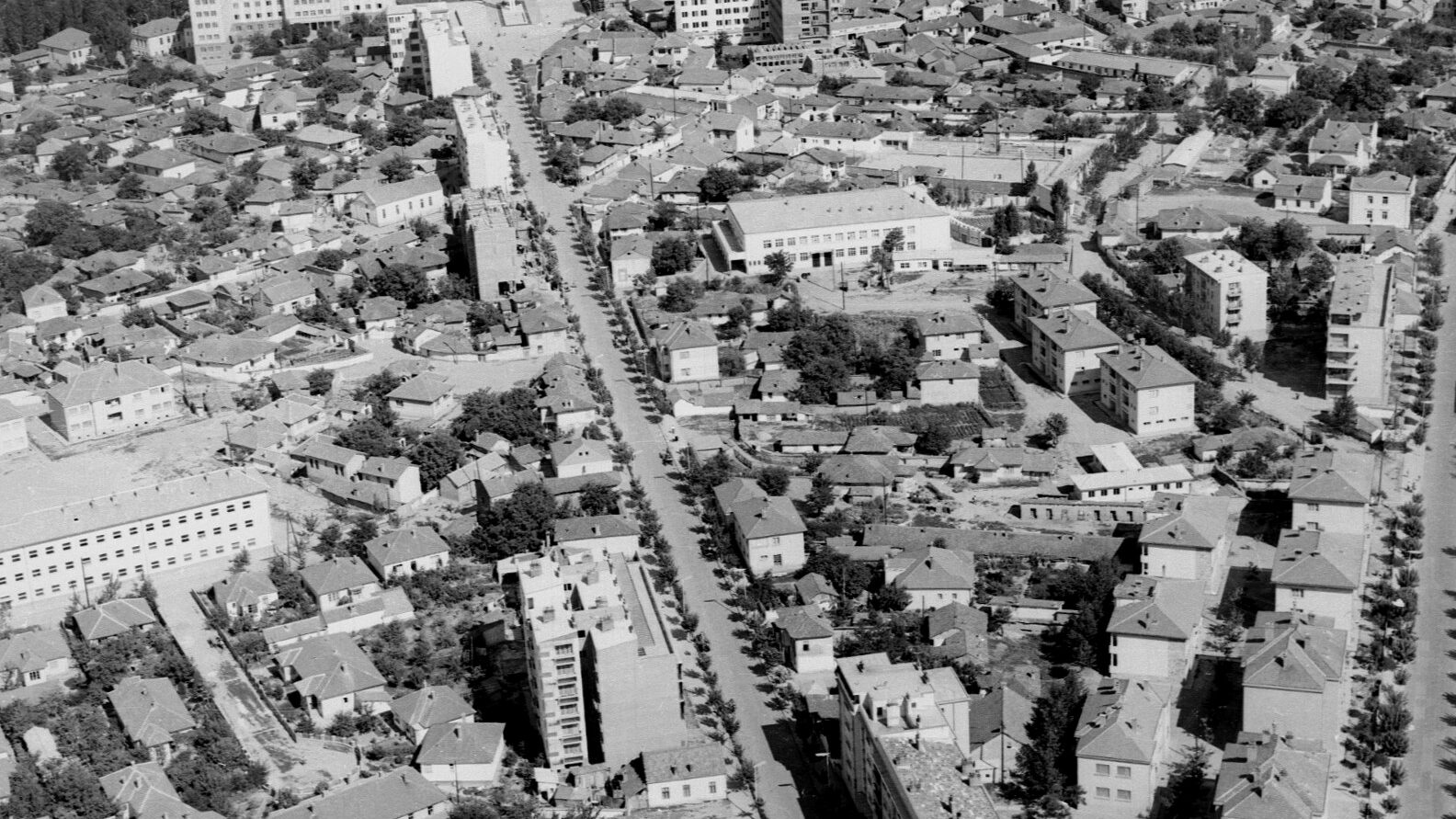
Old Prishtina. Courtesy of Kosovo Archives.
Despite expressing concerns about the loss of cultural heritage, Canolli acknowledges that Prishtina remains open to new ideas, thanks to the influence of the substantial Kosovar diaspora. As a result, Prishtina has developed a “mimetic awareness of development” and a certain fantasy in everyday life, aspiring to be more “like western countries.”
The urban transformation of Prishtina
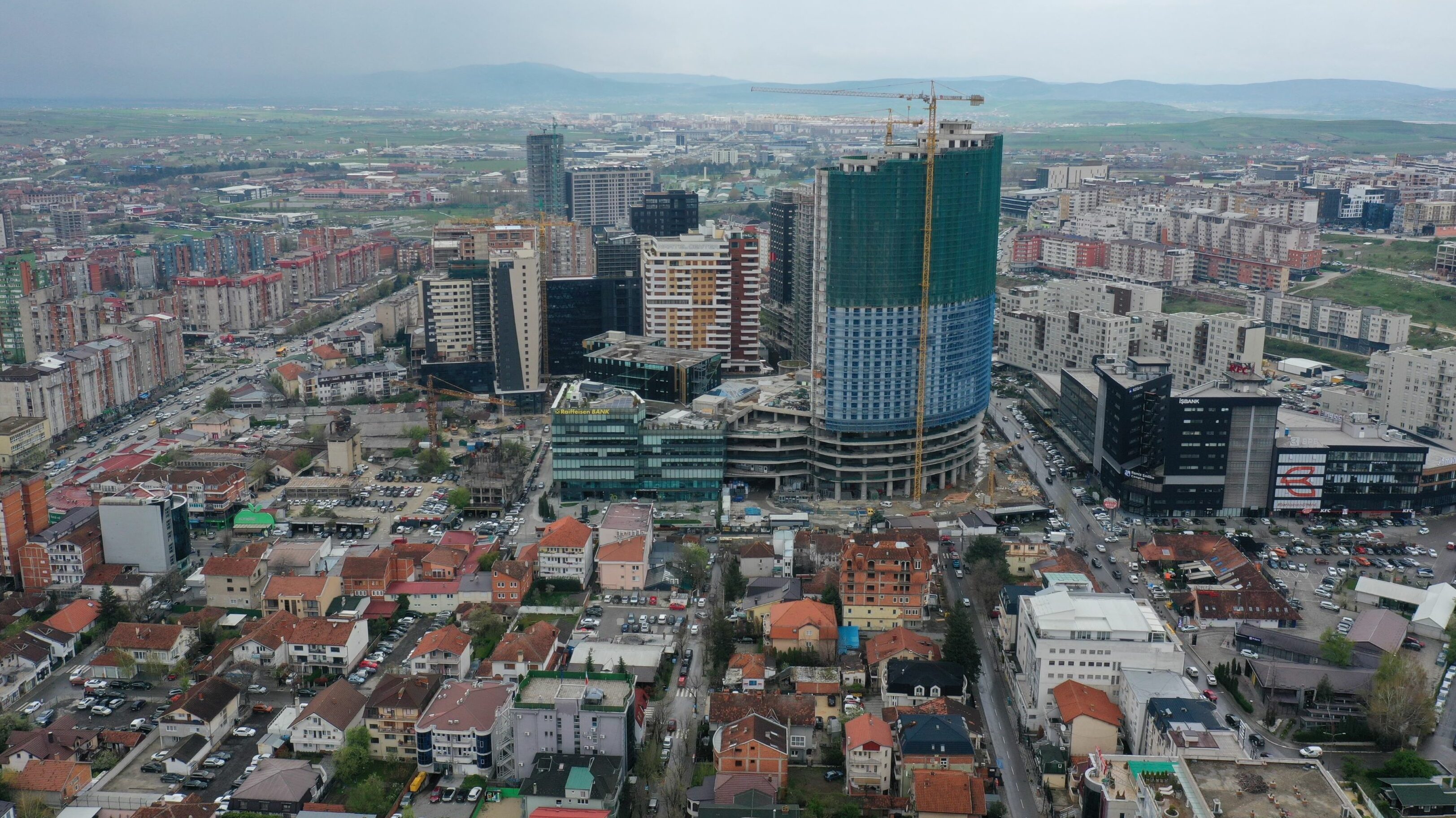
Prishtina, May 2023. Photo: Denis Sllovinja/ Prishtina Insight
Residents of Prishtina frequently liken their city to an urban jungle.
Yll Rugova, who has served as the Director of Culture in Prishtina and as Deputy Minister of Culture, reflects on the capital’s development, which has witnessed three significant waves since its first mention in 1342. In his article titled “The New Capital in the Block,” Rugova notes that the first wave occurred during the Ottoman Empire when Prishtina served as the administrative center of the sanjak, an administrative unit during the Ottoman Empire.
The second wave took place in 1947 when Prishtina assumed the role of the capital of Kosovo, which was then an autonomous region of Serbia. The third wave is unfolding today as Prishtina evolves, increasingly asserting itself as the capital of independent Kosovo.
Valdet Osmani, the Chief of the Organization of Architect of Kosovo, in an interview with Prishtina Insight, attributes the “poor” state of new buildings in Prishtina to mismanagement during the early post-war years by the Directorate of Urbanism.
Osmani calls for an investigation by the Prosecutor’s Office into the urbanization scheme responsible for causing urban chaos and damage to public property. He believes that the city’s decline began in 2003 when non-professionals assumed control of the urbanism directorate, resulting in amateurish development and lax regulatory oversight.
According to Osmani, the root of the problem can be traced to the Development and Regulatory Plans, construction criteria, and permits that allowed for construction without adhering to proper laws and technical standards.
Furthermore, he criticizes the construction of an Underground Parking Lot, contending that it contradicts architectural, urban planning, and environmental protection parameters.
Consequently, when conditions and construction permits are issued, they often violate the law, technical regulations, and developmental and regulatory plans, further exacerbating the city’s decline.





